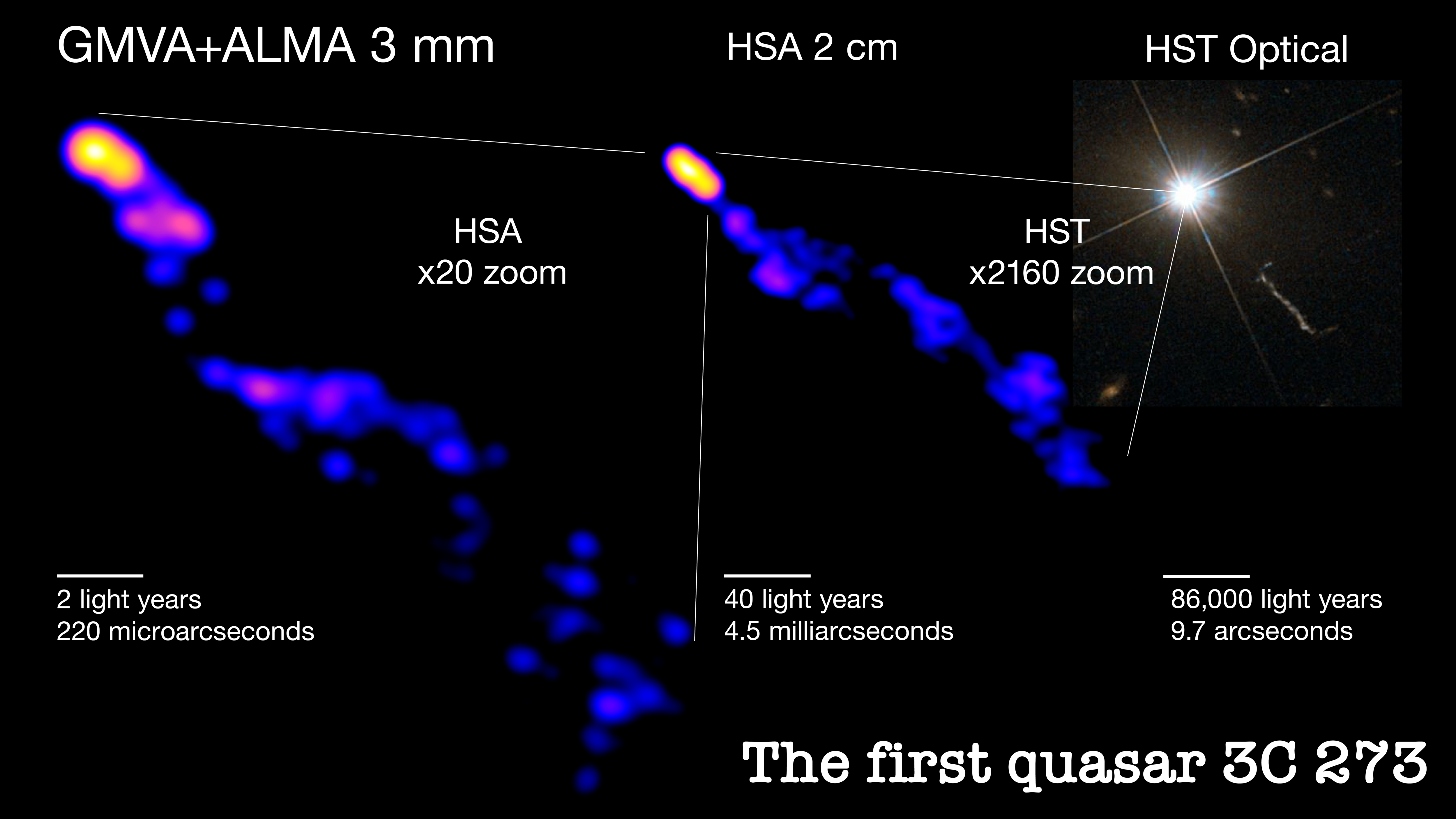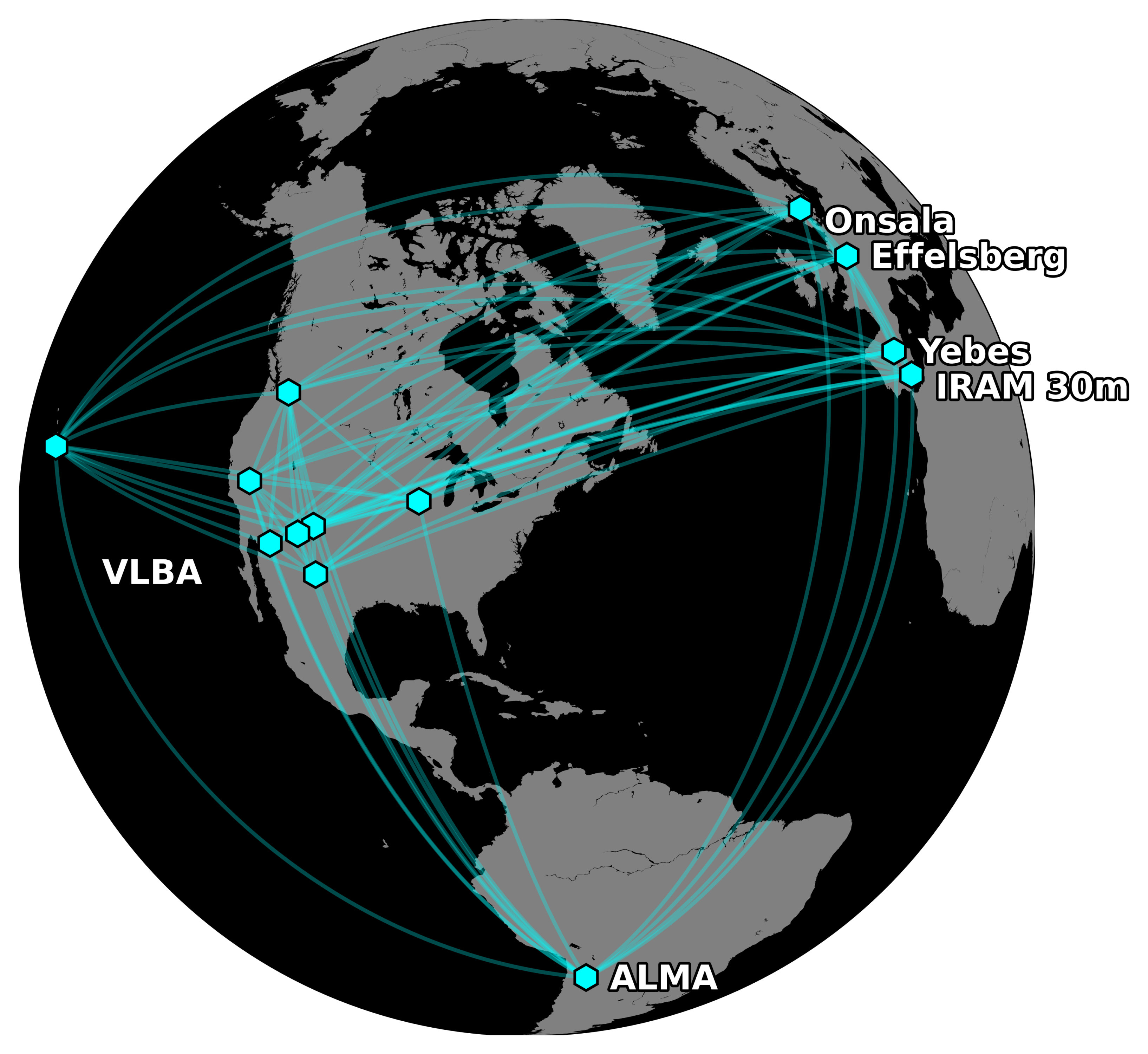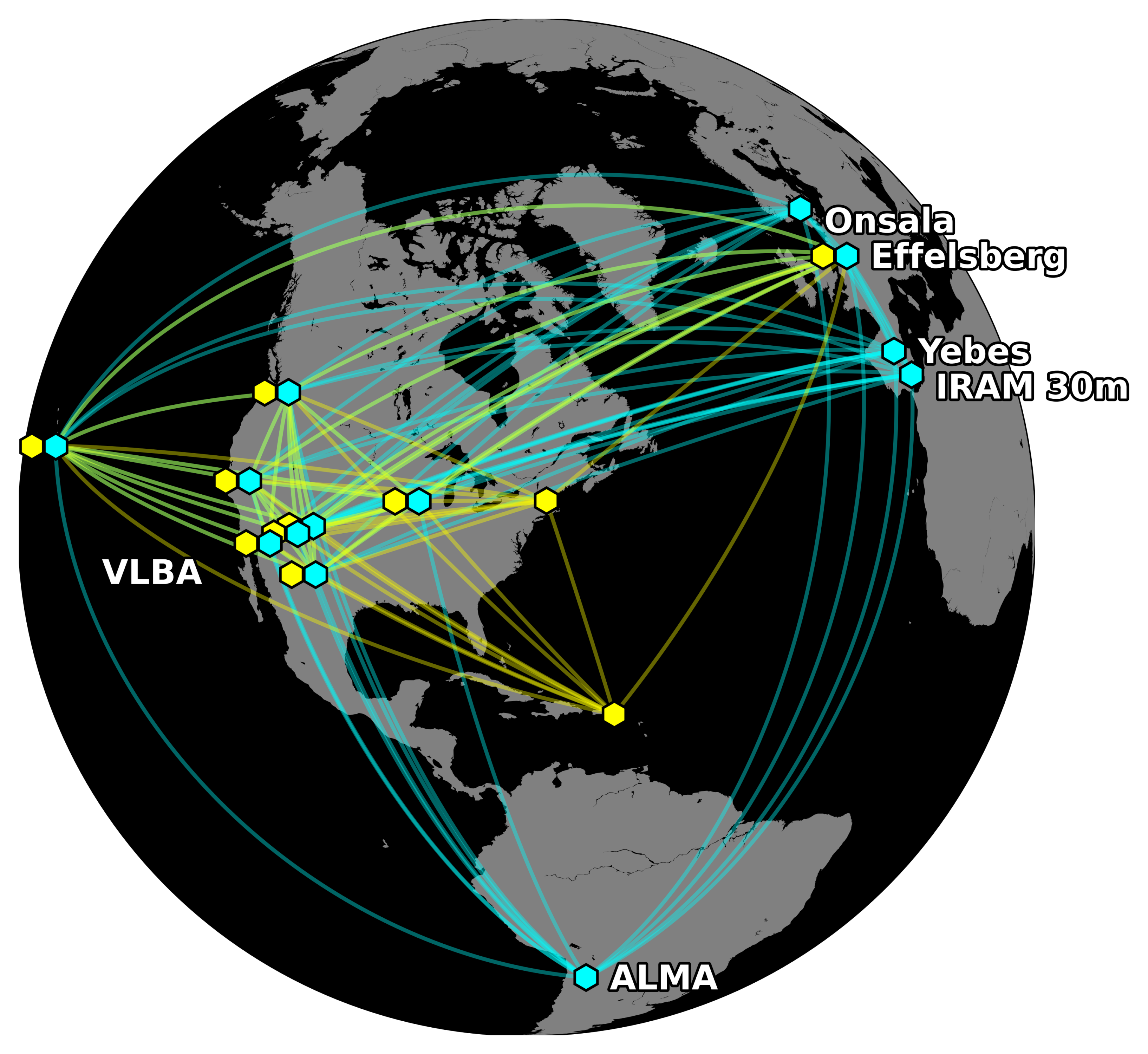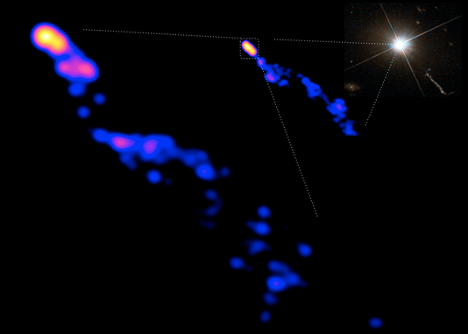Astronomers Observed the Innermost Structure of a Quasar Jet
At the heart of nearly every galaxy lurks a supermassive black hole. But not all supermassive black holes are alike: there are many types. Quasars, quasi-stellar objects, are one of the brightest and most active types of supermassive black holes.
An international group of scientists has published new observations of the first quasar ever identified — the one labeled 3C 273, located in the Virgo constellation – that show the innermost, most profound parts of the quasar’s main plasma jet.
Active supermassive black holes emit narrow, mighty jets of plasma that escape at nearly the speed of light. These jets have been studied throughout the modern era of astronomy, yet their formation process is still a mystery to astronomers and astrophysicists. An unresolved issue has been how and where the jets are collimated or concentrated into a narrow beam, which allows them to extend to extreme distances beyond their host galaxy and even affect galactic evolution. These new observations are thus far the deepest into the heart of a black hole, where the plasma flow is collimated into a narrow beam.
This new study, published in The Astrophysical Journal (Okino et al., 2022), includes observations of the 3C 273 jet at the highest angular resolution to date, obtaining data for the innermost portion of the jet, close to the central black hole. The ground-breaking work was made possible by using a closely coordinated set of radio antennas around the globe, a combination of the Global Millimeter VLBI Array (GMVA) and the Atacama Large Millimeter/submillimeter Array (ALMA) in Chile. Coordinated observations were also made with the High Sensitivity Array (HSA) to study 3C 273 on different scales and measure the jet’s global shape.
“3C 273 has been studied for decades as the ideal closest laboratory for quasar jets,” says Hiroki Okino, lead author of this paper and a Ph.D. student at the University of Tokyo and the National Astronomical Observatory of Japan. “However, even though the quasar is a close neighbor, until recently, we didn’t have an eye sharp enough to see where this powerful narrow flow of plasma is shaped.”
The image of the 3C 273 jet gives scientists the very first view of the innermost part of the jet in a quasar, where the collimation or narrowing of the beam occurs. The team further found that the angle of the plasma stream flowing from the black hole is tightened up over a very long distance. This narrowing part of the jet continues incredibly far, well beyond the area where the black hole’s gravity rules.
“It is striking to see that the shape of the powerful stream is slowly formed over a long distance in an extremely active quasar. This has also been discovered nearby in much fainter and less active supermassive black holes,” says Kazunori Akiyama, a research scientist at MIT Haystack Observatory and project lead. “The results pose a new question: how does the jet collimation happen consistently across such varied black hole systems?”
The new, incredibly sharp images of the 3C 273 jet were made possible by including ALMA observations. The GMVA and ALMA were connected across continents using very long baseline interferometry (VLBI) to obtain detailed information about distant astronomical sources. The remarkable VLBI capability of ALMA was enabled by the ALMA Phasing Project (APP) team. The international APP team, led by MIT Haystack Observatory, developed the hardware and software to turn ALMA, an array of 66 telescopes, into the world’s most sensitive astronomical interferometry station. Collecting data at these wavelengths dramatically increases the resolution and sensitivity of the array.
“The ability to use ALMA as part of global VLBI networks has been a complete game-changer for black hole science,” says Lynn Matthews, Haystack principal research scientist and commissioning scientist for the APP. “It enabled us to obtain the first-ever images of supermassive black holes, and now it is helping us to see for the first time incredible new details about how black holes power their jets.”
This study opens the door to further exploration of jet collimation processes in other black holes. Data obtained at higher frequencies allows scientists to observe finer details within quasars and other black holes.
“Formation mechanism of the jets from supermassive black holes is still elusive, though they were first identified more than 100 years ago,” says Hiroshi Nagai, project associate professor at NAOJ ALMA Project. “The sharpest images with the aid of ALMA and GMVA have significantly improved our understanding of the jets, and we hope to advance this study with even better angular resolution.”
Additional Information
The Atacama Large Millimeter/submillimeter Array (ALMA), an international astronomy facility, is a partnership of the European Organisation for Astronomical Research in the Southern Hemisphere (ESO), the U.S. National Science Foundation (NSF) and the National Institutes of Natural Sciences (NINS) of Japan in cooperation with the Republic of Chile. ALMA is funded by ESO on behalf of its Member States, by NSF in cooperation with the National Research Council of Canada (NRC) and the Ministry of Science and Technology (MOST) and by NINS in cooperation with the Academia Sinica (AS) in Taiwan and the Korea Astronomy and Space Science Institute (KASI).
ALMA construction and operations are led by ESO on behalf of its Member States; by the National Radio Astronomy Observatory (NRAO), managed by Associated Universities, Inc. (AUI), on behalf of North America; and by the National Astronomical Observatory of Japan (NAOJ) on behalf of East Asia. The Joint ALMA Observatory (JAO) provides the unified leadership and management of the construction, commissioning and operation of ALMA.
The GMVA observes at the 3mm wavelength, using the following stations for this research in April 2017: eight antennas of Very Long Baseline Array (VLBA), the Effelsberg 100m Radio Telescope of the Max-Planck-Institut für Radioastronomie (MPIfR), the IRAM 30m Telescope, the 20m telescope of the Onsala Space Observatory, and the 40m Radio Telescope of Yebes Observatory. The data were correlated at the DiFX VLBI correlator at the MPIfR in Bonn, Germany.
Images



Contacts
-
Nicolás Lira
Education and Public Outreach CoordinatorJoint ALMA Observatory, Santiago - ChilePhone: +56 2 2467 6519Cel: +56 9 9445 7726Email: [email protected] -
Alvaro Gonzalez
Interim NAOJ ALMA OfficerPhone: +81-422-34-3889Email: [email protected] -
Nancy Wolfe Kotary



